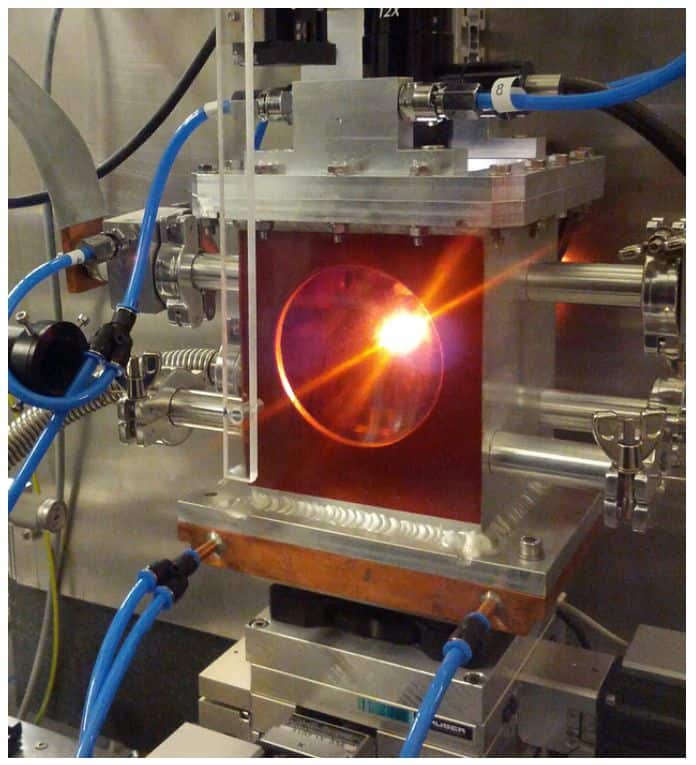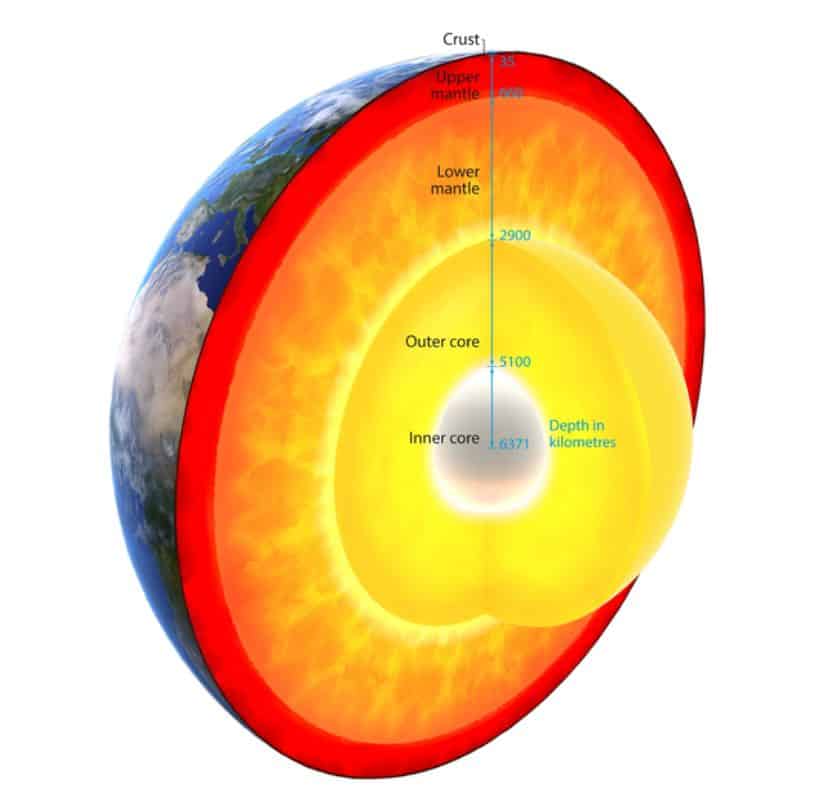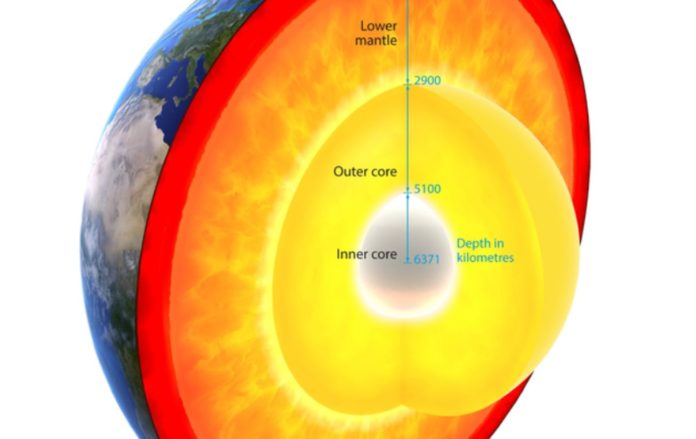How does the Earth recycle material from the surface into the deep interior?
Mountains, volcanoes, and earthquakes, which we witness on the surface of the Earth, are manifestations of activities taking on deep within our earth.
We’re part of a conveyor belt system called plate tectonics, in which old crust at the ocean’s borders is pushed below beneath continents and into the mantle.
Under the tremendous temperatures and pressures of the mantle, some minerals in the rocks change as the crust sinks deeper into the Earth. One of these mantle minerals is among the weakest in the Earth’s interior, according to a new study from University of Utah geologist Lowell Miyagi and colleagues.
It’s a difficult mineral to investigate, but research indicates that it’s 1,000 times softer than much of the mantle. This is crucial for comprehending what happens to rock slabs as they sink into the Earth, which tells us about how and why earthquakes and volcanoes occur on the surface.
“We want to understand the mechanical properties of all these rocks and minerals because this is what determines how a slab will behave when it sinks into the Earth’s interior,” Miyagi, associate professor of geology and geophysics, said.

Plate tectonics above and below ground
The Earth’s crust is made up of plates, which are vast pieces of crust that appear immovable and everlasting to us. The plates that make up the oceans begin with magma rising in the center of the plate in a location known as the “mid-ocean ridge,” which is a descriptive term. The magma condenses into basalt, which resembles the black volcanic rock ejected by Hawaiian volcanoes.
The plate extends as magma rises, pushing older basalt crust to the flanks. Every plate collides with its neighbors, and the ocean crust, which is denser than continental crust, is forced deeper into the mantle. Subduction is the term for this procedure.

Following that, observations of seismic waves created by earthquakes that travel down the interior of the Earth provide us with the best information as to the fate of this recycled crust.
“It’s a bit like when you go to the doctor to image a baby with ultrasound,” Miyagi added. “In this case, the waves are bigger and the baby (the Earth) is bigger.”
Seismic waves travel at different speeds through different materials, so when they indicate something odd, geoscientists take notice and question, “What’s that made of?” A Large Low Shear Velocity Province (LLSVP) exists at the mantle-core border and is one of the most notable unknowns. One is beneath the Pacific Ocean, and the other is beneath Africa. They’re also massive: the province beneath the Pacific is about 1,800 miles (3,000 kilometers) broad, roughly equal to the distance between Salt Lake City and Washington, D.C. They’re also tall, maybe reaching 600 miles (1,000 kilometers) in height. That’s more than 100 times Mount Everest’s height.
Geoscientists originally considered that these provinces were hotter than the surrounding rock and could have formed the Hawaiian Islands or the East African Rift Zone.
“However more recently people think that these are a different kind of rock than the mantle,” according to Miyagi. “So the question is: What kind of rock is it, and how does it pile up there?”
Meet the mineral davemaoite
The mineral davemaoite, with the chemical formula CaSiO3, is one contender. It belongs to the perovskites mineral family. Davemaoite is abundant (up to 30%) in sinking slabs of rock, but not so much in the rest of the mantle. Although understanding the mechanical properties of davemaoite, such as how it bends or stretches in the mantle, is critical for understanding how the Earth recycles material from the surface into the deep interior, it’s a difficult mineral to research. Why?
“It is very difficult to study because it cannot survive to room pressure,” adds Miyagi. “It has to be made at high temperature and pressure. If you take the pressure and temperature away it becomes a glass.”
The only davemaoite discovered at the surface so far, discovered in 2021, was locked inside a diamond, which kept the high pressure required to keep its atomic structure intact.
So, how did the research team investigate davemaoite’s mechanical properties? By crushing powdered CaSiO3 between two diamond anvils at 30 gigapascals of pressure (19 times the pressure at the ocean’s lowest point) and heating it to 1600 degrees Fahrenheit (1150 K). Just to let an X-ray beam in to analyze the atomic structure of the resulting crystal, they had to create a window into the device.
1,000 times softer
The researchers modeled davemaoite’s strength and behavior under stretching and pulling after researching its structure. They discovered that Davemaoite is 1,000 times softer than the rest of the mantle.
But what exactly does that imply? A material’s viscosity, or capacity to flow, is measured in a variety of units, including Pascal seconds. Water has a thickness of roughly 0.001 Pascal seconds, while peanut butter has a thickness of around 200 Pascal seconds. The thickness of the Earth’s lower mantle is roughly 1021 Pascal seconds, which is a lot thicker than peanut butter. Davemaoite is maple syrup if the mantle is peanut butter. And anyone who has tried both of these toppings on their pancakes knows how different they are.
Let’s see how this disparity impacts a slab of rock sinking into the ground. The temperature and pressure create davemaoite in much of the slab at a depth of roughly 340 mi (550 km), making it highly weak.
“Those weak parts of the slab could then delaminate or peel away from the rest of the slab and then fall away into the mantle,” Miyagi adds. “We have seismic images that look like parts of slabs have separated and fallen away.”
“If this dense material, rich in davemaoite, separates and sinks, it’s plausible that it could form a Large Low Shear Velocity Province,” according to Miyagi.
“This would occur over long time periods of piling up this material by dripping these upside-down plumes to the base of the mantle.”
There’s still a lot to learn about how the characteristics of minerals within the Earth influence how things move.
“Knowing the mechanical properties of this material gives us a better understanding of how slabs subduct and behave in the Earth’s interior,” Miyagi adds. “So, this can give us a better understanding of the large-scale processes that drive plate tectonics and thus earthquakes and volcanoes.”
Source: 10.1038/s41586-021-04378-2
Image Credit: University of Oxford, Hauke Marquardt
You were reading: A surprisingly soft mineral such as davemaoite may control how Earth recycles rocks
